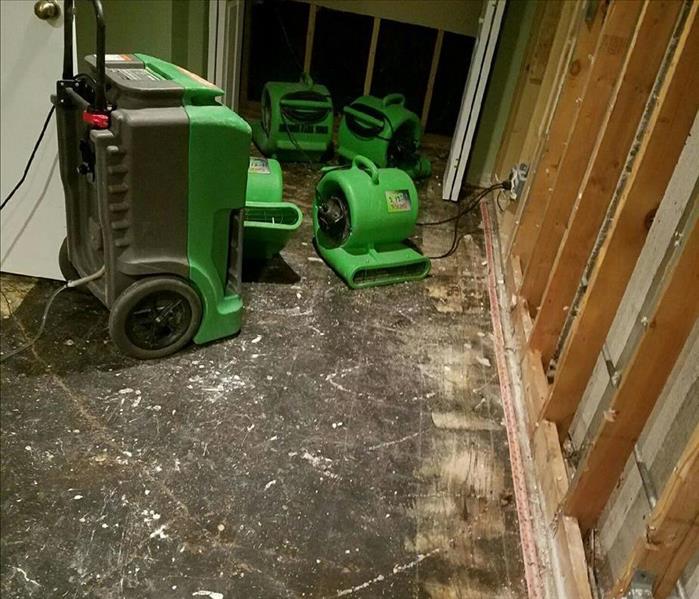Flood Cuts: What You Need To Know
8/12/2021 (Permalink)
Flooding in Rosemont, IL, can invade your business’s building in the blink of an eye. Once the waters recede and you can examine the aftermath, it may be hard to know where to begin your cleanup efforts. A storm cleanup and restoration company can use a variety of techniques to repair your building, including flood cuts. Knowing what these cuts are and how they work can give you a better idea of how they are an asset to the restoration process.
What Is a Flood Cut?
After flood waters are removed from an affected room, restoration experts may make a flood cut in your drywall to assess the damage behind it. This cut is typically made anywhere from a foot to fifteen inches above where the water reached. The walls behind this cut can then be dried, inspected and disinfected as needed.
Why Is a Flood Cut Performed?
Whether a flood cut is performed depends on the type of flooding that affected your building. In most cases, restoration experts consider floodwater to be black water and therefore contaminated. Because of this contamination, the section of the wall is removed and discarded to lower the risk of pathogen-borne illnesses that might be present. Keep in mind that this cut may be necessary in each room affected by flood waters.
What Other Factors Are Considered?
This type of tear-out is not always necessary. However, there are several circumstances other than black water that might require it. Walls that contain insulation, for example, must undergo a cut because most types of insulation cannot be properly dried or disinfected. Soggy insulation is no longer effective and must be replaced. If restoration experts believe the interior walls have been severely affected, they may opt for a flood cut to inspect the wall’s condition.
Flooding at your Rosemont, IL, business can be difficult to deal with. However, restoration professionals have a variety of techniques, such as flood cuts, to repair flood damage and help you get your business up and running again.



 24/7 Emergency Service
24/7 Emergency Service
